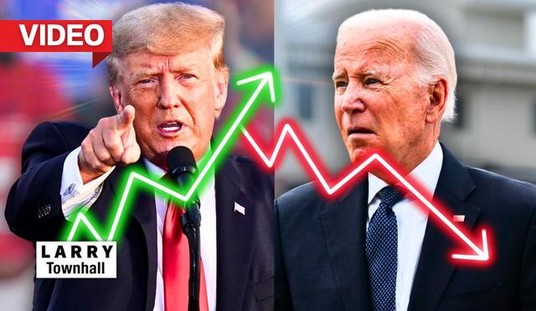The Second Korean War began as Kim Jong Un smiled while the elderly clique of generals who had frustrated him with their cowardly advice and feeble half-measures filed into the Central Committee’s grand conference room.
They stood silently around the table, waiting for the boy-dictator to nod so they might take their seats. Kim saw the contempt in their eyes, the condescension, and it enraged him. They and their insistence on caution, their refusal to act, had kept his grandfather and father before him from achieving a final victory against the Americans and their puppets in the south. No more.
“Traitors!” Kim bellowed in his odd, high-pitched voice, and at this signal the side doors flew open and the hardened commandos of his personal guard flooded the room. The generals looked around, bewildered, pistols now at their heads.
“You cannot stop me from leading the people to victory!” Kim shouted. As one, the commandos fired. Kim smiled.
Three days later, at just before 0700 hours, the commanding general of U.S. Forces Korea was in the second of a four SUV convoy zipping through Seoul traffic toward the American headquarters. The intel reports showed unusual movement, more than was expected even with the latest round of declarations from the North that war was at hand. War had been at hand since the shooting stopped back in 1953; the general had no inkling that this was anything different until he looked out a side window at one of the capital’s sleek, modern towers and watched a North Korean 170mm artillery shell blow out its 39th through 42nd floors.
“Holy sh-,” he said, but never finished. The PRG round from the North Korean Special Forces infiltration team sent as part of the operation to decapitate the allied command and control punched through the armor of the Chevy Blazer and through the general as well.
Recommended
The conventional assault was both brutal and exquisitely planned, and was supplemented by a two pronged unconventional effort that sought to make it impossible for the Republic of Korea (RoK) and the much smaller U.S. forces in the south to react. It had been planned for 70 years. But so had the allied response.
Thousands of artillery tubes in dug-in positions opened fire from their hidey holes just north of the Demilitarized Zone (DMZ), raining thousands of shells on military, infrastructure and civilian targets all the way south into Seoul. All the fire was preplanned – agents had scouted out the targets over the decades. Each gun went down its individual list, pouring the allotted number of shells onto each coordinate. At the same time, armored units roared south on the RoK’s modern superhighways that would take them to Seoul and beyond.
Simultaneously, the South’s internet crashed. The North’s thousands of hackers had done their work. Then they turned their efforts on military and civilian systems on the American mainland.
The Americans had pre-planned combat positions, but first they had to get out of their camps. Infiltrators hit them hard, and bases became battlefields. At times American fuelers gassed up M1 tanks even as the tank crew blazed away with machine guns at North Korean special forces. But it wasn’t only infiltrators. At the commencement of fighting, thousands of sleeper agents activated. Trusted South Korean civilians (and soldiers too) became vicious killers and saboteurs, assassinating leaders and blowing up roads, bridges and installations. These betrayals – some at very high levels – fractured the trust between the allies and made coordination extremely difficult.
But the counterattack came. Seven decades of preparation for this day began to pay off. Within minutes, U.S. and RoK artillery roared into action. They had their own targets – and the first on the list to be serviced were the North Korean artillery pieces. Soon, the devastating steel rain from the north began to slacken as the allies’ guns methodically annihilated the dug-in enemy howitzers.
The lead North Korean armored corps smashed headlong into a South Korean division north of Seoul. The communists expected the conscripts of the South’s army to be soft, weakened by easy living and pop fads like “Gangnam Style.” And to some extent the young recruits had resented being dragged out of their comfortable lives for two year hitches in the military, with what seemed a foolishly belligerent attitude toward what, after all, were fellow Koreans up north.
But these young men saw their homes leveled, shrieking civilians maimed by artillery splinters, their country on fire. They fought like their grandfathers had, like heroes and patriots. The division was wiped out almost to a man in the first 10 hours, but they died in place without budging. The North Korean initiative stalled; the casualties were massive. It took several hours to start moving again.
Those precious hours, bought with the blood of South Korean patriots, enabled an American armor battalion to get into position. A U.S. Army armor battalion, equipped with M1 tanks, is the most powerful battalion-sized element in the history of warfare. The commander and command sergeant major, wearing their cavalry Stetsons, walked the line of concealed positions and told their men, “Steady boys. Not one inch backwards. Not one damn inch!”
The recon elements had been stripped away by the RoK army, so the main force of the North Koreans appeared first rolling down the long stretch of freeway. The commander dropped into the hatch of his own M1 and substituted his Stetson for his vehicle crewman helmet.
Five thousand meters, four, three, two… The battalion’s gunners acquired their targets, shouting, “Tanks, front!”
They held fire. The lead tank was at one thousand meters, then five hundred. Now the bulk of the enemy force was well inside range; the bulk of their lead division was now fully within the kill zone. There was no escape. The commander keyed his mike on the command net.
“Engage!”
Dozens of sabots, long tungsten darts, blasted out of the M1s’ 120mm guns at an incredible speed. They needed no explosive warhead. They sliced through the North Korean armor, detonating the air inside and shredding anything that survived with spall. Cold and coolly, the gunners found and killed target after target until the North Koreans stopped coming. The freeway, so clean and modern the day before, was a Hieronymus Bosch tableau of burning armor, rent concrete and charred corpses.
The North Korean tsunami had broken on a wall of American steel – and as the Americans refit and rearmed a South Korean armor unit made a night forward passage of lines to extract ruthless vengeance on the routed invaders.
Overhead, what seemed like a never-ending line of jets shrieked toward their targets. The pilots of the North Korean Air Force had foolishly risen to challenge the Americans that morning. They had all died.
Now allied bombers roamed freely over the North. First in priority: nuclear sites, with air defenses, communication, command and control sites and fuel depots close behind. The Navy joined in on the strategic air campaign, both with its air and cruise missile assets. It also ensured that the entire North Korean Navy became submarines – involuntarily.
That evening, a C-17 jet landed at an air base near Pusan. A company of light infantry from the US deplaned, the first of over 150,000 American reinforcements that would flow into South Korea in the coming weeks.
Twenty days after Kim Jong Un’s massacre of the senior generals who had tried to make him see reality, the little dictator was in a command bunker north of Pyongyang howling at his latest batch of generals. He had ordered the previous bunch shot after they admitted the allies had crossed the DMZ and that his army was in full retreat.
“Where is China? Those cowards!” he wailed. China, its economy bound up with America’s and furious over Kim’s decision to launch this war, had cut him off entirely. Unlike in the first war, there would be no human wave of Communist Chinese flooding across the Yalu River to push back the imperialist invaders.
North Korea was alone, an elderly diplomat tried to explain. Kim scowled and a commando major shot the old man through the forehead.
“It is time!” the little dictator screamed. “It is time for them to burn! I order you to fire the nuclear rockets!” The survivors stood in silence, none wanting to be the one to tell Kim that American strikes had wiped out North Korea’s rudimentary nuclear force in the first hours of the war.
The bunker shook, and bits of concrete fell from the ceiling. Kim’s savage visage changed to that of a frightened little man. The commando major, loyal to the end, grabbed Kim and pulled him out into a corridor. They would make a break for it. They would go into the hills and organize a great guerilla army, just as Kim’s grandfather, the Great Leader, had done against the Japanese (or so the greatly embellished official story read).
Kim stopped, panting, out of breath from running in the dark tunnel. The major turned, and a dot of red light appeared on his forehead. There was a clack and the commando dropped, a pink mist lingering where his head had been.
Kim let out a squeal and looked up. Three DELTA operators, their faces covered by night vision goggles, advanced from the shadows, their weapons aimed at his head.
“I…,” Kim began, but three 5.56mm rounds smashed into his face. The man responsible for the deaths of over 100,000 people collapsed. The lead operator stepped up and put two rounds into his heart – superfluous, but standard operating procedure.
Looking down at the dead dictator, the American sneered, “Well, I guess that makes us even with the SEALs.” Then they headed down the corridor to finish their mission.
The preceding is based on public information and does not represent the views, predictions or plans of any organization.
























Join the conversation as a VIP Member